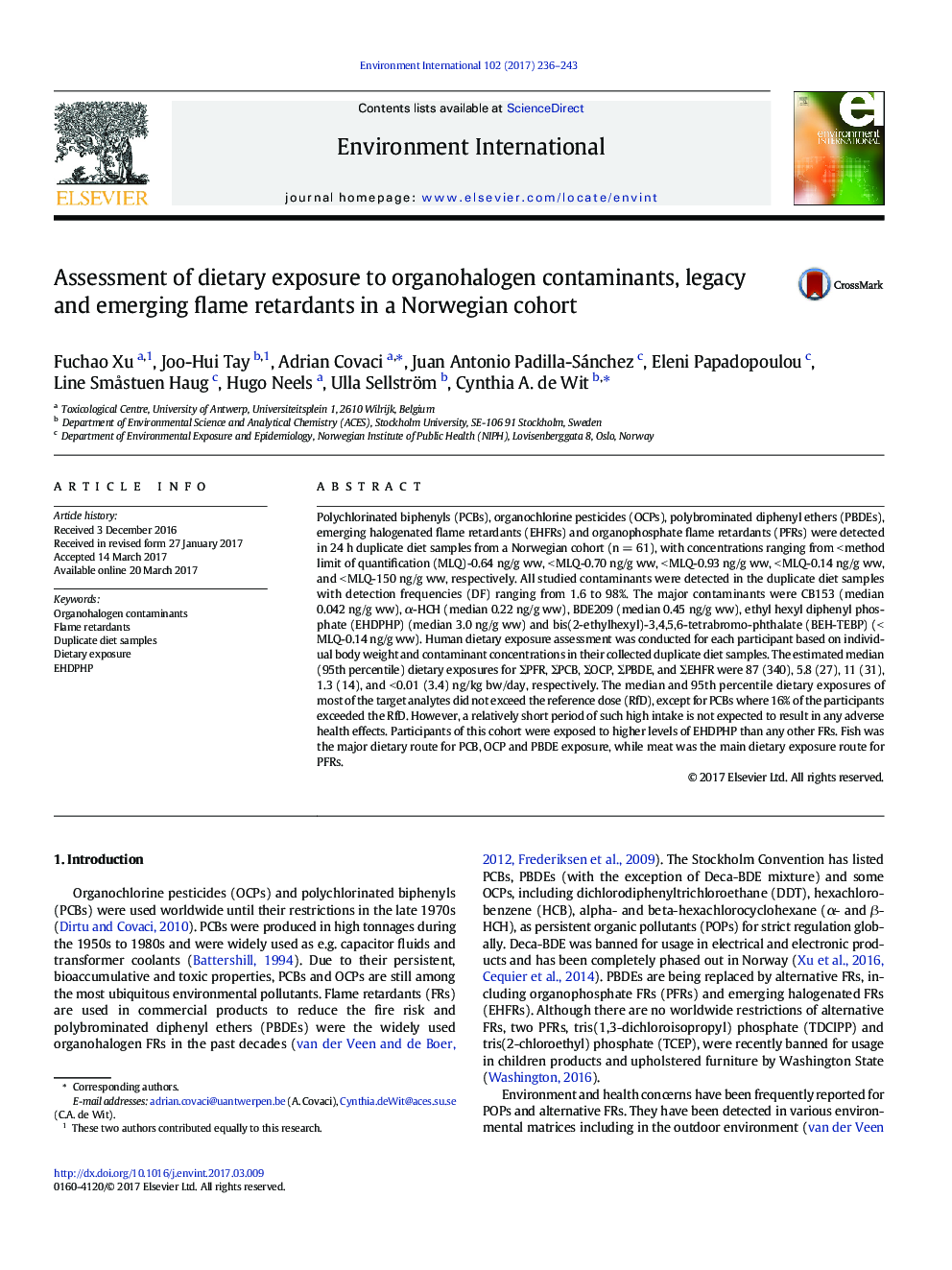| کد مقاله | کد نشریه | سال انتشار | مقاله انگلیسی | نسخه تمام متن |
|---|---|---|---|---|
| 5748265 | 1619028 | 2017 | 8 صفحه PDF | دانلود رایگان |

- First survey of EHFRs and PFRs in duplicate diet samples
- EHDPHP was frequently detected in food samples at relatively high levels.
- Food might be the major pathway for human exposure to EHDPHP.
- PCBs and OCPs in the diet were linked to fish, while PFRs were linked to meat.
Polychlorinated biphenyls (PCBs), organochlorine pesticides (OCPs), polybrominated diphenyl ethers (PBDEs), emerging halogenated flame retardants (EHFRs) and organophosphate flame retardants (PFRs) were detected in 24 h duplicate diet samples from a Norwegian cohort (n = 61), with concentrations ranging from < method limit of quantification (MLQ)-0.64 ng/g ww, < MLQ-0.70 ng/g ww, < MLQ-0.93 ng/g ww, < MLQ-0.14 ng/g ww, and < MLQ-150 ng/g ww, respectively. All studied contaminants were detected in the duplicate diet samples with detection frequencies (DF) ranging from 1.6 to 98%. The major contaminants were CB153 (median 0.042 ng/g ww), α-HCH (median 0.22 ng/g ww), BDE209 (median 0.45 ng/g ww), ethyl hexyl diphenyl phosphate (EHDPHP) (median 3.0 ng/g ww) and bis(2-ethylhexyl)-3,4,5,6-tetrabromo-phthalate (BEH-TEBP) (< MLQ-0.14 ng/g ww). Human dietary exposure assessment was conducted for each participant based on individual body weight and contaminant concentrations in their collected duplicate diet samples. The estimated median (95th percentile) dietary exposures for ΣPFR, ΣPCB, ΣOCP, ΣPBDE, and ΣEHFR were 87 (340), 5.8 (27), 11 (31), 1.3 (14), and < 0.01 (3.4) ng/kg bw/day, respectively. The median and 95th percentile dietary exposures of most of the target analytes did not exceed the reference dose (RfD), except for PCBs where 16% of the participants exceeded the RfD. However, a relatively short period of such high intake is not expected to result in any adverse health effects. Participants of this cohort were exposed to higher levels of EHDPHP than any other FRs. Fish was the major dietary route for PCB, OCP and PBDE exposure, while meat was the main dietary exposure route for PFRs.
Journal: Environment International - Volume 102, May 2017, Pages 236-243